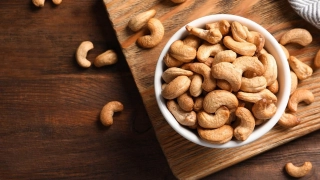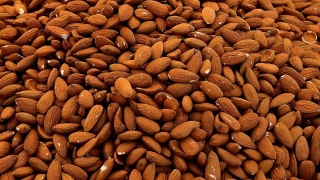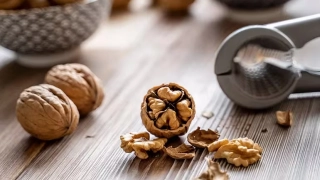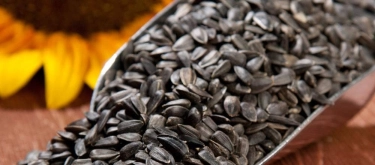Hazelnut: Taste Profile, Aroma, Benefits and Health Risks
Hazelnut (Corylus avellana) is a small round nut that has been cultivated for thousands of years, particularly in Europe and Asia Minor. Today, it plays a central role in both sweet and savory cuisine, adding richness to confectionery, baked goods, and even drinks. Known for its unique ability to blend seamlessly with chocolate, coffee, and dairy, hazelnut has become an essential flavor in global gastronomy.
Hazelnut is one of the most common tree nut allergens, and even small amounts can trigger severe reactions in sensitive individuals. People with nut allergies should avoid hazelnuts completely, while others can safely enjoy them in moderate amounts.
What does Hazelnut taste like?
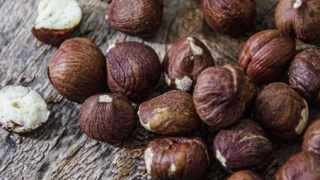
Complete Sensory Description
-
Taste: Hazelnut delivers an initial mild sweetness followed by a rich, rounded nutty flavor. Raw kernels are slightly grassy with a subtle bitterness from the skin, while roasted hazelnuts intensify into deep chocolate-like, caramelized notes.
-
Aroma: The raw nut has a clean, woody scent. Once roasted, its fragrance expands into warm praline, cocoa, and light coffee husk, filling the air with a comforting sweetness.
-
Texture: Raw hazelnuts are firm and crunchy at the first bite, quickly releasing natural oils that create a creamy mouthfeel. Roasting softens the kernel, making it more friable, while ground hazelnut feels velvety and slightly oily.
-
Appearance: Small, rounded kernels with ivory interiors wrapped in a thin brown skin. When roasted, they gain a golden to amber hue, while finely ground hazelnut appears as a pale beige powder.
In-depth Flavor Analysis
The unique taste of hazelnut arises from a complex interplay of chemical compounds and structural components.
-
Key Flavor Compounds
Hazelnuts contain high levels of filbertone (5-methylhept-2-en-4-one), a signature ketone responsible for the nut’s characteristic sweet, nutty flavor. Pyrazines (2,3-dimethylpyrazine, trimethylpyrazine) contribute roasted and chocolate-like notes, especially after heating. Furanones and aldehydes (hexanal, nonanal) provide caramelized, buttery, and slightly green undertones. -
Macronutrient Matrix
With about 60% fat, mainly oleic acid, hazelnuts have a creamy texture and slow flavor release. Their proteins interact during roasting to produce Maillard reaction products, amplifying savory and roasted qualities. Carbohydrates are relatively low but contribute to browning and mild sweetness during heat treatment. -
Impact of Processing
-
Raw form: A balance of grassy, woody notes with mild sweetness.
-
Light roasting (120–140°C): Enhances sweetness and reduces raw bitterness.
-
Medium roasting (150–160°C): Generates a peak in chocolate-praline aroma due to Maillard-derived pyrazines.
-
Dark roasting (>170°C): Accentuates smoky and bitter tones, with possible acrid aftertaste.
-
-
Scientific Perspective on Flavor Formation
The nut’s oil-rich matrix preserves volatile compounds, allowing flavors to develop gradually in the mouth. The fine emulsion of lipids and proteins contributes to the characteristic creamy mouthfeel. Roasting breaks down simple sugars and amino acids, producing advanced Maillard products that intensify aroma and add depth.
Varieties and Culinary Applications
Common hazelnut cultivars include ‘Barcelona’, ‘Tonda Gentile’, and ‘Negret’, each with subtle differences in size, sweetness, and roasting quality. Hazelnuts are widely used in:
-
Confectionery: pralines, gianduja, nougat, chocolate spreads.
-
Baking: cakes, cookies, pastries, nut flours.
-
Savory dishes: crusts for fish or poultry, nut-based sauces, or ground into dukkah.
-
Dairy alternatives: hazelnut milk and cream for vegan applications.
Selection and Storage
Choose hazelnuts that feel heavy for their size, with uncracked shells and no signs of mold. Shelled hazelnuts should appear uniform and without rancid odor. Store in airtight containers in a cool, dark place. For longer storage, refrigeration or freezing is recommended to prevent oxidation of the oils.
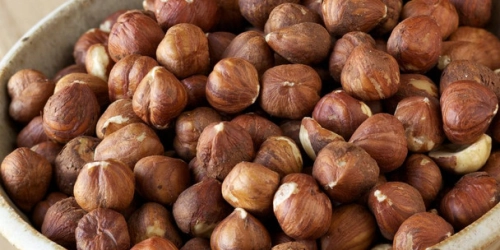
Nutritional Insights
Hazelnuts are calorie-dense but nutrient-rich. They are high in monounsaturated fats, vitamin E, magnesium, and B vitamins. Regular consumption supports cardiovascular health, helps reduce LDL cholesterol, and contributes antioxidants to protect against oxidative stress. Their dietary fiber content also aids in digestion and satiety.
Expert Insights & Culinary Tips
-
Toast hazelnuts gently to release full aroma, but avoid over-roasting to prevent bitterness.
-
Remove skins after roasting by rubbing the nuts in a towel, which improves sweetness and texture.
-
Pair hazelnuts with chocolate, caramel, or coffee for a classic flavor synergy.
-
Use ground hazelnuts to enrich doughs, giving baked goods a moist, nutty complexity.
Interesting and Curious Facts
-
Ancient Romans considered hazelnuts a symbol of peace and fertility.
-
In Turkey, the world’s largest producer, hazelnut cultivation accounts for around 70% of global supply.
-
The distinctive compound filbertone is so specific to hazelnuts that it is used in food science to authenticate hazelnut-based products and detect adulteration.
Harm and Dietary Considerations
Hazelnuts are safe for most people but a common allergen. Even small traces can provoke anaphylaxis in allergic individuals. Due to high caloric density, excessive consumption may contribute to weight gain. Improper storage can lead to aflatoxin contamination from mold. Pregnant and breastfeeding women without allergies can consume hazelnuts safely, but those with nut sensitivities should avoid them.
Religious Dietary Considerations
Hazelnuts are plant-based and permissible in all major religious dietary laws, including halal, kosher, Hindu, and Buddhist practices.
Final Thoughts & Sensory Journey
Hazelnut combines a naturally sweet nuttiness with chocolate-like depth that roasting further enhances. Its creamy mouthfeel, versatile applications, and strong cultural significance make it one of the most cherished nuts worldwide.
Resources
-
Alasalvar, C., Shahidi, F. (2008). Tree Nuts: Composition, Phytochemicals, and Health Effects. CRC Press. ISBN: 9780849397773.
-
Lähteenmäki, L., & Laakso, P. (2000). Flavour development in roasted hazelnuts (Corylus avellana L.). Food Chemistry, 68(1), 35–39. DOI:10.1016/S0308-8146(99)00143-3
-
Amaral, J. S., et al. (2006). Characterization of Hazelnut Volatile Profile and Aroma-Active Compounds. Journal of Agricultural and Food Chemistry, 54(19), 7507–7513. DOI:10.1021/jf060986l

